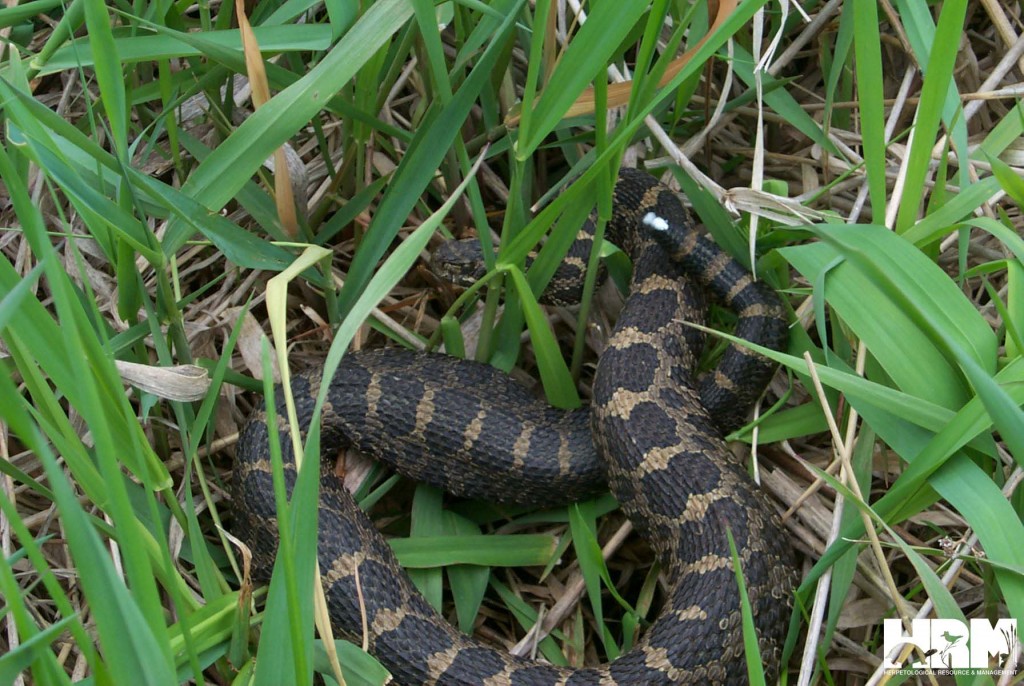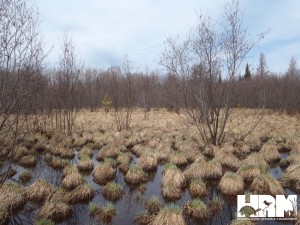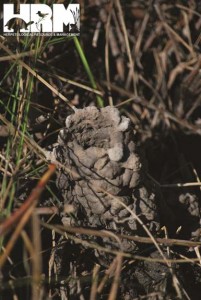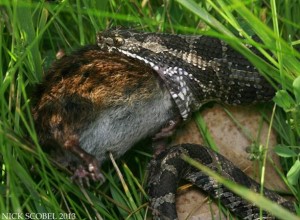Species Introduction and Ecology
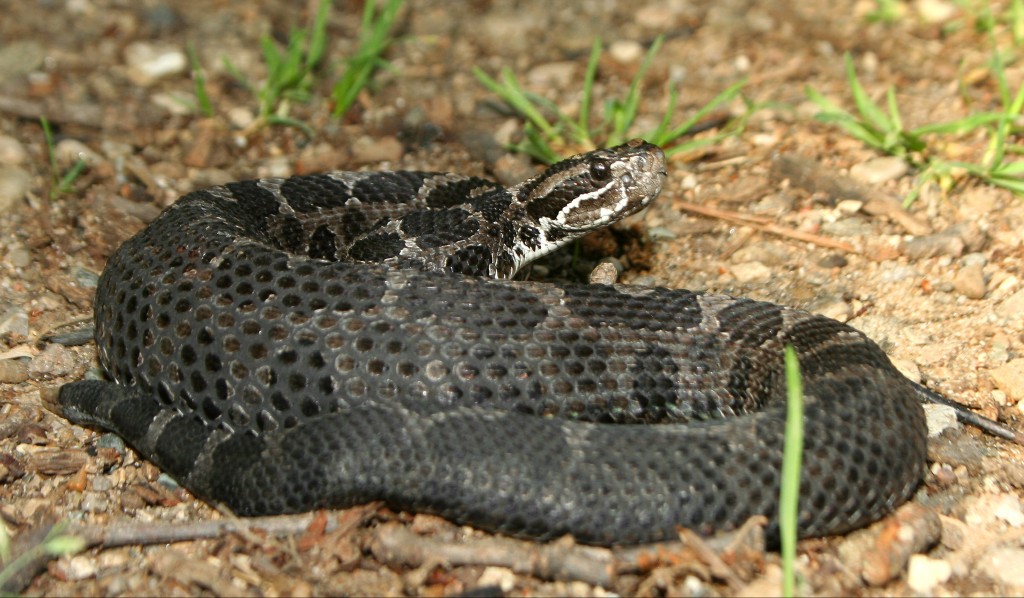
The Eastern Massasauga Rattlesnake (Sistrurus catenatus) is a small- to medium-sized pit viper that occurs in the Great Lakes Basin. It is one of two venomous snake species occurring in the region and the only venomous snake found in Michigan. Recently, the Eastern Massasauga Rattlesnake (EMR) was federally listed by the US Fish and Wildlife services as a threatened species due to declining populations throughout its range
Identification
The Eastern Massasauga Rattlesnake can be identified by the following characteristics:
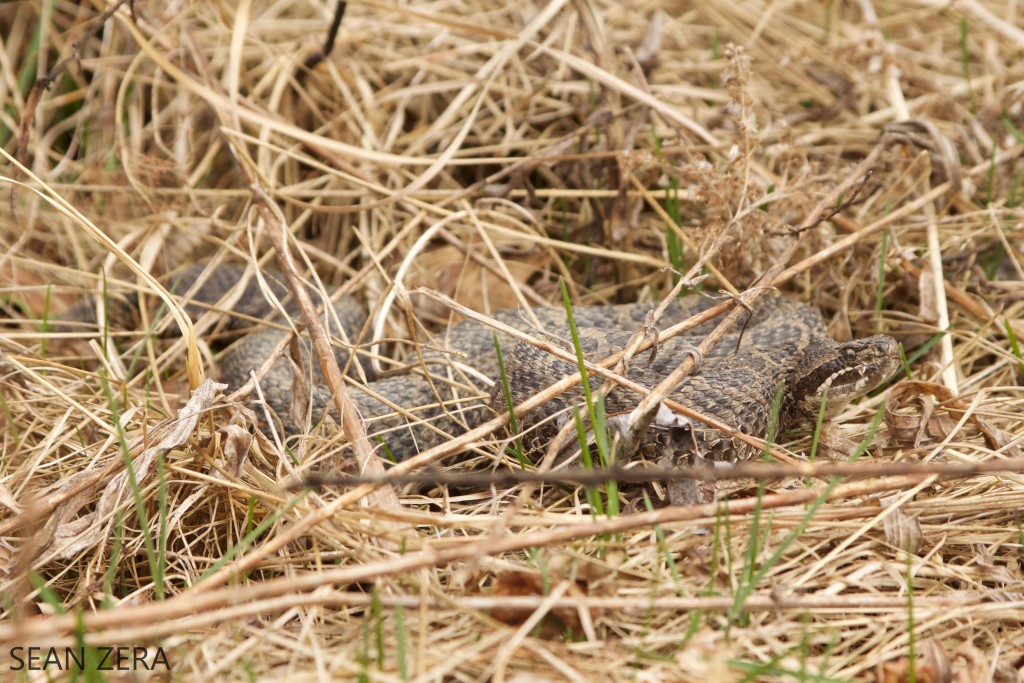
- Adult snakes average 2-3 feet in length
- Thick bodied
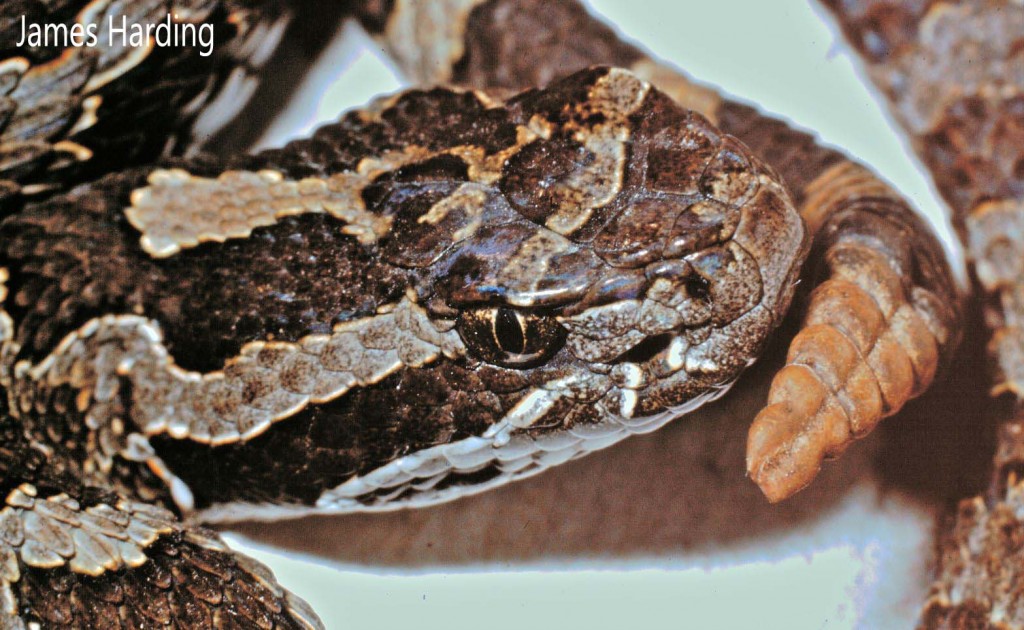
- Vertical pupils
- Well-developed rattle on tail
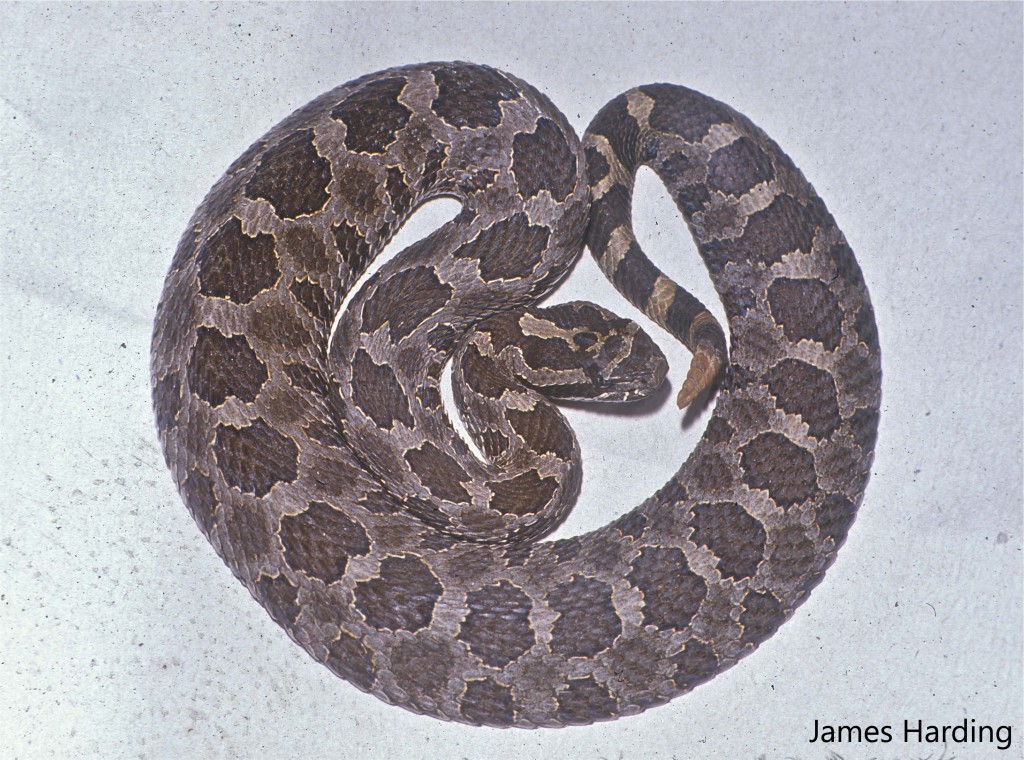
- Diamond shaped head
- Grey to dark brown background with darker saddle-shaped blotches running down the back
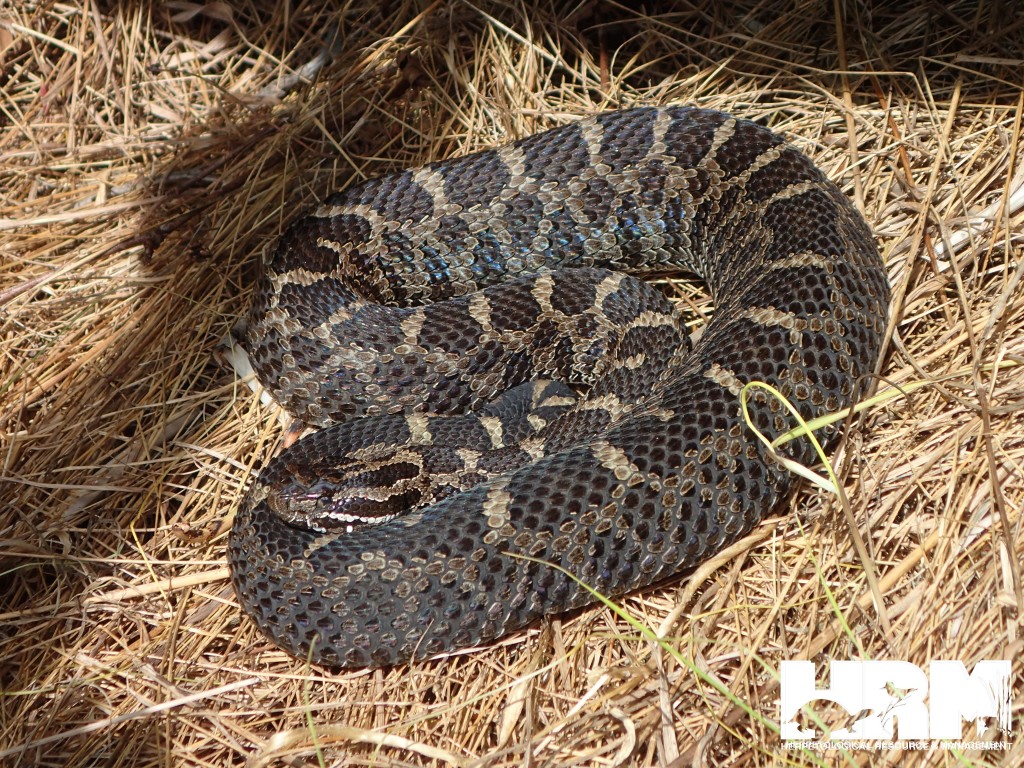
Distribution
Historically, the EMR was found throughout the Great Lakes region, extending from central New York and southern Ontario to south-central Illinois and eastern Iowa. In recent years, the number of EMR populations and individual snakes has declined considerably. The EMR is reported to occur in only 60% of its historic counties. Today, most populations of EMR are now small and isolated from other populations. The cryptic nature of the species makes populations and their sizes very difficult to study and determine. Lower population densities and less connected populations makes massasauga populations highly sensitive to the loss of individuals and changes in mortality rates.

US Fish and Wildlife Service
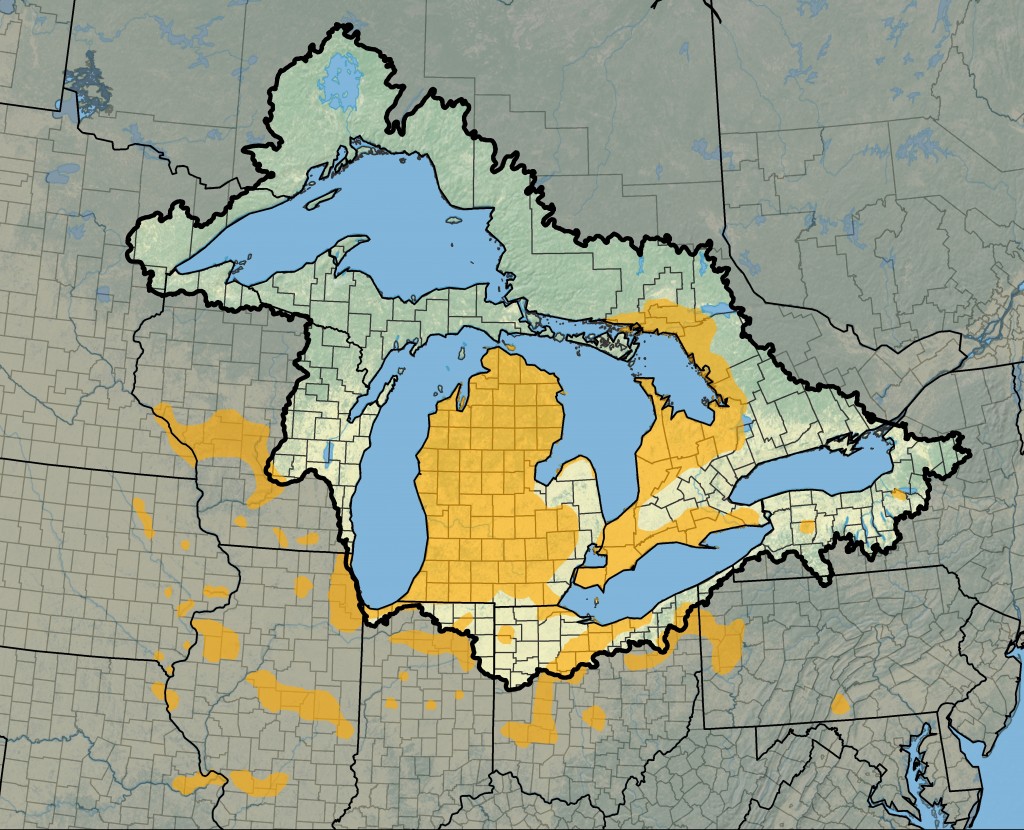
Habitat
Habitat requirements for the EMR vary seasonally and across its range, but generally consist of a mosaic of both suitable wetlands and adjacent intact uplands. The species is known to occupy wet prairies, shrub swamps, fens and bogs, sedge meadows, old fields, floodplain forest, and coniferous forest. Habitat needs to have a fairly open vegetative structure with thinly distributed trees and shrubs that allow for proper thermoregulation and increased rodent populations. EMR depend on wetland communities in fall through spring for hibernation purposes and upland habitats during the summer for foraging and gestation. Habitat used for foraging, reproduction and hibernation need to be in close proximity of each other so that it is accessible to the snakes.
Ecology
The active season varies throughout the species’ range, with northern populations typically being active from early April to early November and southern populations from mid March to mid November, though these time frames may fluctuate and are heavily dependent on region and climatic conditions. In spring and fall, the snakes generally are the most active during the warmest parts of the day, whereas in the hottest part of the season they tend to limit their activity to the morning and evening.
EMR can hibernate for up to 6 months during the winter season in crayfish chimneys and small mammal burrows. They are known to hibernate alone or in small groups and they often display site fidelity, returning to the same hibernation site every fall. Optimal hibernation sites need to have saturated but not inundated soil.
Small mammals make up the majority of the adult diet, whereas younger snakes eat a larger variety of foods including smaller snakes, amphibians and insects. Predators of the EMR include large snakes, birds (hawks, herons) and mammals (raccoons, foxes).
Reproduction
The age of sexual maturity for EMR ranges from 3-8 years depending on location and growth rate of individuals. Mating occurs after males pursue females emitting pheromone trails and typically takes place in mid-July to mid-September. Fertilization is delayed until the following spring and birth occurs from late summer to early fall. EMR give birth to live young. Depending on the size of the female, broods range in size from 3-19 young snakes. Frequency of reproduction varies by range with some females giving birth annually and other biennially (Michigan is typically every other year).
